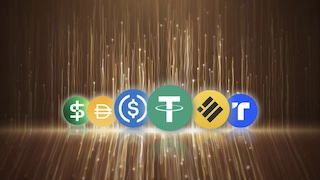Jun 05 (News On Japan) - In the evolving world of education and learning, powered by Artificial Intelligence (AI) and Information Technology (IT), students and teachers seek ways for effective learning and teaching.
Thanks to the development of digital literacy classes, students are now getting prepared for a technological future.
Digital literacy in the classroom introduces students to how they can utilize these digital tools and technology to meet the rising needs of the technological future. Digital literacy skills encourage creativity, promote digital citizenship, and prepare students for their future. It helps bridge the gap between digital tools. While digital tools like ChatGPT cannot detect AI-generated content, they can contribute heavily towards developing digital literacy skills among students.
Are you thinking of teaching digital literacy to your students? Do you want to learn about the role of digital literacy in education? Are you wondering what digital literacy skills can help students? If yes, this is the article for you.
Here, we will list the eight major roles of digital literacy in the classroom in preparing students for a technological future. We will also cover how digital tools can best enhance classroom literacy. Let's view each role in detail.
1. Enhancing Critical Thinking and Problem-Solving Skills
A study by essay writing services at Washington City Paper that works on providing high-quality educational assistance shows that students who receive digital literacy tend to develop critical thinking and problem-solving skills at a higher level. This is because, through digital tools, they have vast knowledge of specific topics and resources to dive deep into each concept, do their reasoning, develop their initiative and thoughts, and solve the problem accordingly.
Digital literacy lessons include Artificial Intelligence and Virtual Reality (VA), which gives students real experience tackling each issue and developing critical thinking and problem-solving skills. Instead of relying on what their teacher says about each topic, they can now take their approach to doing research, reading content, understanding the concept, and delivering to their peers.
2. Fostering Effective Communication
Digital tools allow students to collaborate and build an effective communication medium. One can connect with fellow students through various apps or ask teachers to collaborate while sitting in different locations.
Communication in digital literacy classes doesn't have to be limited to class discussion. Digital literacy skills foster effective communication among students, where they learn from fellow students and share their knowledge with others. Online tools like Google Meet and Microsoft Team allow students to easily create groups, complete projects, collaborate, and discuss subject-related matters.
3. Encouraging Creativity and Innovation
Digital literacy in education has helped students go beyond the content in the book, build their creativity, and develop their innovation. Instead of being limited to what their teachers teach, students can use digital tools and technology to explore their creativity and innovate.
For example, if students are interested in mathematics, they can participate in online courses outside of school, learn more than their students, and build their creativity through it. And it doesn't have to be limited to course-related content. Students can foster creativity and innovation in art, music, and more.
4. Promoting Collaboration and Teamwork
Teaching digital literacy allows students to come together and learn together. This promotes collaborative teamwork. Students can involve themselves in various group projects, where they collaborate and collaborate to bring the best work. And, with digital tools and equipment availability, collaboration with teammates is simpler than ever. They can quickly get on a Zoom call or connect through any other learning app where they come together to discuss the topic, understand each other's viewpoints, and come up with an effective strategy to complete their project.
And teamwork doesn't have to be limited to completing the project! Students can effectively collaborate for any assignments or discuss the topic of their interest.
For example, if there is a group of students in the class who have majored in science, they can collaborate to dive deep into understanding science with their classmates.
5. Preparing for the Workforce
Because the present and the future world will be led by technology, students must be taught the concept of technology and its role in the current scenario. Through digital literacy lessons, students can understand the technology environment and how learning about it can help them prepare for the future workforce.
Further, implementing digital literacy in education proves that students are being taught basic technological requirements like using laptops, preparing presentations, using Virtual Reality, Augmented Reality, and more. These digital literacy skills are critical, so students must be taught about them.
6. Improving Digital Citizenship
With the growing demand for a technological future, it's more important than ever that students are taught about digital tools, their impact, their importance, and how they can be used to facilitate the world's development.
Classroom literacy on digital tools and technologies helps students grasp how they function and how they can be further utilized. It's like preparing students as digital citizens, where they can tackle the issue and develop creativity and innovation by implementing tools and technologies.
7. Facilitating Lifelong Learning
With the wide use of technology in every area of work, students are more likely to use it in the future for their work purposes. Teaching digital literacy helps facilitate the lifelong learning process. Right from the school, students will be taught how these digital tools can be used in learning, reading, working, preparing, and every aspect of our lives.
Be it learning or using technology, it's a process where few errors arise, and through creativity, one must come up with the best solution. But, what's constant through it is the learning process. Students can use digital tools to develop and implement the best solution for each issue.
The process is life-long, and they deal with similar situations repeatedly, whether in their learning process, daily life, or workplace.
8. Bridging the Digital Divide
Digital literacy lessons ensure that students, irrespective of their digital background, have access to the tools and technologies and how they can further enhance their learning and teaching process. Students, being the future, must be equipped with digital knowledge to ensure that they can solve real-world problems.
Digital literacy in school can help bridge the gap between real teaching and its implementation in real-world scenarios.
Wrapping Up
As we mentioned earlier, technology is the present and future. Therefore, students must be able to adapt to the evolving world of technology. For this, digital literacy has proven to be the most effective way to introduce them to digital tools and technologies and their use and implementation in teaching and learning. Further, it can be expanded into explaining to students how digital tools and technology can be incorporated into real-world scenarios to deal with real-world problems and come up with innovative and creative approaches to solve them.
In this article, we listed down the role digital literacy plays in helping students prepare for a technological future. From enhancing critical thinking and problem-solving skills to fostering effective communication, digital literacy allows students. I am promoting cola, bioactive teamwork, preparing for the workforce, improving digital citizenship, facilitating lifelong learning, and bridging the digital divide.














